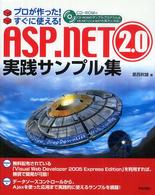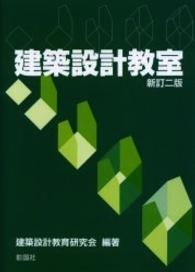- ホーム
- > 洋書
- > 英文書
- > Business / Economics
Full Description
This timely book comprehensively analyzes supply chain resilience (SCR) policy, responding to the urgent need to re-examine supply chain structures globally since the COVID-19 pandemic. It combines economics, law, international trade, geopolitics, and national security policy in a detailed discussion of the multi-faceted challenges of achieving supply chain resilience.
Sam Mulopulos showcases a new theoretical approach to SCR policy reoriented towards identifying critical vulnerabilities to the economy. The book describes innovative methods of categorizing SCR policies as transparency, diversification, and capacity interventions, examining the costs and benefits of each. It also outlines how powers such as China and Russia create supply chain vulnerabilities for market economies, adding a geopolitical and national security consideration to what is often perceived as merely an economic issue. Ultimately, Mulopulos argues for policy that identifies supply chain weaknesses to give policymakers fresh ideas for protecting critical supply chains.
Presenting original, specific policy ideas for building SCR post-pandemic, this is a crucial read for supply chain policymakers worldwide, as well as academics in trade law, international economics and public policy.
Contents
Contents
Introduction: the theory, practice, and action of supply chain
resilience policy
PART I A THEORY OF SUPPLY CHAIN RESILIENCE
1 A conceptual framework for supply chain resilience policy
2 Market efficiency and non-market distortions
3 Policy interventions to build supply chain resilience
4 The Supply Chain Resilience Checklist
PART II SUPPLY CHAIN RESILIENCE IN PRACTICE
5 Assessing current transparency interventions
6 Assessing current diversification interventions
7 Assessing current capacity interventions
PART III NEW ACTIONS FOR SUPPLY CHAIN RESILIENCE
8 The cooperation and audit for resilience transparency
9 The Security and Trade Agreement for Resilience
10 Comprehensive Onshoring for a Resilient Economy
11 Conclusion: paradise egained

![ホースマンカレンダー 〈2021〉 [カレンダー]](../images/goods/ar2/web/imgdata2/48790/4879002216.jpg)






